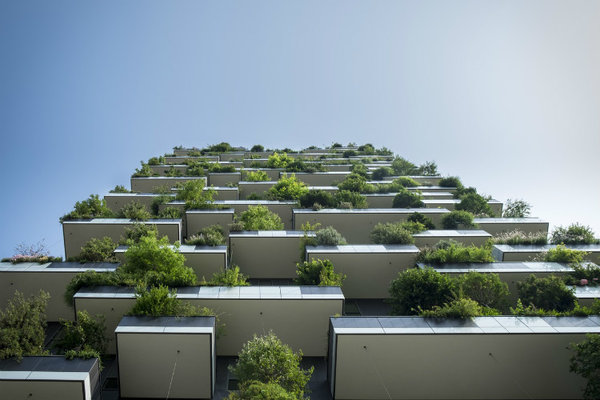Construction on new buildings never stops, and with it grows a demand of sustainability options. Green construction depends on using the best materials that meet both strength and usefulness as much as it does environmental standards. There is an expected growth in demand of 11 percent in the next year, so it’s best to understand how and what’s making this happen.
The Seeds of Green Building
The beginnings of green building started during the 1970s during the energy crisis created from the OPEC oil embargo. The environmental movement formed from the crisis created a public push to find ways to lower the dependency on fossil fuels for energy. Ideas like commercial solar panels for homes came into the public landscape.
This way of thinking spread into the ways developers and architects looked at their building designs. Teams developed sustainable solutions, such as reflective flooring and triple-glazed windows, which uses direct sunlight to harness daytime energy for consumption. Research continued into the next decades, creating innovative sustainable building ideas like water reclamation systems and modular construction.
Why Choosing Green Materials for Building Matters
The impact these new eco-friendly buildings are substantial on many levels. Buildings in the U.S. are the source of serious amounts of CO2 emissions, beating out CO2 produced by transportation and industrial sources. Constructing LEED-certified buildings ensures carbon dioxide emissions drop more than 30 percent while reducing water and energy consumption.
Using the right kind of green building materials for construction also cuts down the costs for many factors of the building. The daily maintenance costs of green buildings drop year by year. According to statistics from the LEED program, the U.S. will save an estimated $1.2 billion in energy and other savings from LEED-certified buildings.
Green building construction not only improves energy output and maintenance costs – there’s also a growing market for the right materials to construct sustainable and certified buildings. Governments hope that placing regulations that favor green building materials will not only lower carbon emissions but also push the burgeoning green materials market. More government programs like Energy Star also want to appeal to consumers with the hope of getting them to buy more green materials for their home or professional building needs.
Types of Green Building Material
The variety of building materials available is useful when designing the best green building for your needs. Some can be rather simple, while others are more specialized with unique properties.
- Lumber: Buying raw wood for home framing construction can be done in an environmentally safe manner certified lumber by the Forest Stewardship Council (FSC). Reclaimed wood is also a cost-effective and environmentally friendly alternative building material.
- Cork: Cork is becoming a useful choice for flooring and wall covering. It has great insulation properties and has less wear and tear than most floors. The sound insulation and impermeability of cork flooring is also something to consider.
- FRP Grating: This material is beneficial for those looking to build around bodies of water because this material will not rust. Since this material is durable and non-corrosive, it is considered green. It will help contribute to overall LEED points due to its energy performance. FRP grating is typically useful when building walkways, docks, and railings
- Linoleum: It’s important to distinguish the difference between vinyl flooring sold as linoleum and real, natural linoleum. The ingredients of the natural type include linseed oil, wood powder, resins and ground limestone – very different than the petrochemicals used to make vinyl flooring.
- Bamboo: A sturdy material to begin with, what makes bamboo a valuable material is its regeneration time. While regular trees take decades to mature for harvest, bamboo can be harvested somewhere between three to six years.
- Recycled Concrete: The deteriorating infrastructure of decades past can be used to make the foundation for the new. Concrete aggregate is collected from demolition sites and crushed. It’s even more cost-effective when ground on-site when building.
The Fruits of Green Building Materials
The efforts of developing the technology and creating the material creates amazing buildings with innovative features in sustainability built into them. They go beyond solar panels – some buildings use materials to make thick walls that hold more heat for the winter, while others create redesigned areas with salvaged concrete. Add intricate water-reclamation systems and efficient lighting, and you have the makings of gorgeous eco-friendly buildings.

This Women of Green guest blog is by Megan Ray Nichols. Megan writes about many environmental topics including, renewable energy, conservation and sustainability. She invites you to join the discussion on her own blog, Schooled By Science.
Women of Green is TURNING UP THE VOLUME of the feminine voice on the planet in order to create the world we know is possible.
